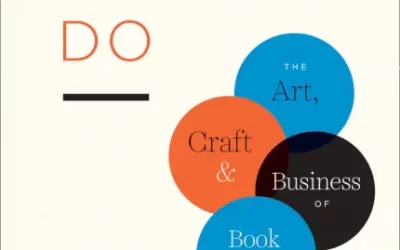Several generations ago, when people in the US imagined what the future might look like, their most optimistic ideas tended toward a kind of Intergalactic Techno-Utopianism best represented in media by L. Ron Hubbard, The Jetsons, or various comic books involving spandex and lasers. This view is now largely museum material. What has replaced it at the optimistic peak of imagined futures is a more modest International Techno-Entrepreneurialism exemplified by Thomas Friedman, the Bill and Melinda Gates Foundation, or the PR departments of multinational corporations. I would like to look at how these ideals and economic practices have affected the publishing industry — in particular, the Scientific, Technical, and Medical (STM) publishing area — over roughly the last 20 years. Primarily, I would like to focus on the rising prominence of Indian editorial support companies and some of their effects on the editorial side of English-language STM publishing.
A good way to trace the emergence of the publishing economy in contemporary India is by placing it beside China, the better-known global manufacturing giant. As with China, India’s revolution of the 1940s broke with British dominance and the attached domestic ruling class. Unlike China under Mao, however, India’s period following national independence took on a more liberal character due to its distinct political influences, British imperial democracy with a swirl of Gandhi. These were reinforced by the typesetting infrastructure and culture of books already in place from companies like Oxford University Press (OUP), Macmillan, and Longman during British rule.[i] The domestic Indian publishing industry came into its own during the 1970s, spawning trade and newspaper publishers still widely read throughout the country. Imported works were also allowed to enter from abroad. An already existing book trade in Hindi, Tamil, regional languages, and an increasingly Indian form of English matured and developed, as did the numbers of readers.[ii] Having a publishing industry and a broader readership helped to develop a body of written work that included Anglo-American influences.[iii]
This awakening in Indian publishing took on a new character in the mid-1980s to 1990s, as India faced economic uncertainty during the fall of the Soviet Union, a major trading partner, again similar to China. In 1991, India took bailout loans from the International Monetary Fund on the condition that they open their economy to foreign investment.[iv] Over the next decade, internal pressure to accelerate this transition built up in India from a growing middle class taught by the rush of Western media to admire new technologies and consumer lifestyles.[v] At the same time, Anglo-American book, journal, and newspaper publishers grew increasingly interested in the start-up companies of India’s educated class for support roles that demanded English-language and computer skills at lower wages. Western media and economic liberalization, as well as the growing potential of the internet, all led the way on connecting the major STM publishers with India as it opened to foreign investment.
The drift in India toward multinational corporate ownership that began in the 1990s culminated in the first decade of the 2000s. As journalist Vinutha Mallya writes:
“When, in 2000, the Government of India lifted the restrictions on foreign ownership in publishing companies and allowed 100 percent equity, the floodgates opened. Many of the major publishing companies in the USA and Europe (directly or as a joint venture with an Indian company) have opened shop in India since then (HarperCollins, Random House, Hachette, Hay House, Springer, Elsevier). Needless to say, Indian publishers are not happy with the growing infusion of capital from these companies and have been lobbying to impose restrictions once again.”[vi]
STM and scholarly publishing giants eagerly sought out the fast, affordable combination of digital and manuscript preparation that Indian companies promised:
“Indian BPOs [business process outsourcers] offer a range of services for STM publishers, ranging from data conversion, digitization, and copy-editing, to complete project management. Many major STM publishers (such as Springer, Elsevier, Pearson, John Wiley, Blackwell, OUP, St. Martin’s Press and CUP [Cambridge University Press]), legal publishing firms, magazines, and newspapers, digitize, design, and archive content in India, despite concerns of delivery schedules, quality, and problems in communication.”[vii]
According to P.T. Rajasekharan, chairman of Focus Medica, an Indian medical publisher, STM publishing (largely owned and distributed by UK- or US-owned companies) now accounts for 84 percent of profits in the Indian publishing world as of February 2014.[viii] STM publishing is now intertwined with India and Southeast Asia to an unprecedented degree. As of 2011, 60 percent of total global publishing outsourcing went to India.[ix] Given the latest two decades’ burst of outsourced publishing, it seems highly unlikely that the calls from domestic Indian publishers and from editors in the US and UK for a retraction will be realized any time soon.
That said, many Anglo-American publishing insiders regard these changes with legitimate frustration. A growing number of editors or assistants in the US and UK have lost their jobs as companies move selected work roles to India. According to an online salary average service, a “mid-career” Indian editor earns between $9000 – $15,000 annually at current exchange rates.[x] The effects of this labor arbitrage (the purchase of labor and sale of its products in different markets to profit from unequal prices) have been felt by US and UK freelance editors too, though not only in expected pay and in “the change in focus of large publishing houses from editorial to marketing.”[xi] Anglo-American editors in STM now find their work both from the publishers themselves and from Indian companies contracting with publishers headquartered in their own countries. This switcheroo has recast some editors as “proof readers” of documents copy-edited by checklist under an Indian editor, with a concomitant increase in workload and drop in pay rates.[xii] As one British STM editor laments:
“Often, the work we’re offered is from Asian companies — and there are problems: poor communication, lack of editorial knowledge by the client, incomplete material. In short, a lot of the clients seem to be ‘pen pushers’ with little knowledge of publishing nor ability to resolve problems: all they want is to pay as little as possible and get the job back on time and don’t want to hear about problems that need resolving. However, the major STM publishers seem happy enough with this state of affairs. They seem to operate on a ‘good enough’ principle, and presumably the product meets needs even though STM books and journals may, overall, be produced to a lower standard than, say, 10–20 years ago. If the customers (academics) are happy and costs can be pushed right down, then the STM publishers are happy too.”[xiii]
Responses by editors to the outsourcing of editing often stress the qualitative. For example, Kathleen Lyle’s bootstrappy “It’s up to us — i.e., SfEP [Society for Editors and Proofreaders] and anyone else who is interested in editorial quality — to demonstrate what good editing is and the value it can add to their publications.”[xiv] Such attempts to shift the terms of the debate are commendable, if perhaps more attuned to their own constituency than to those making the decisions at major STM publishers.
The proliferation of Indian publishing services companies has unsettled an entire industry in ways both problematic and pragmatic. I do not know if this transition will eventually be seen as having compromised the editorial profession or having saved it in a period of crisis, perhaps elements of both. It is my hope that an ethic of respect and cooperation between editors everywhere can keep this transition from being more than a race to the bottom, or even an imagined one. The landscape of editing services for hire has, at its simplest, been flooded with new options from around the world. Some of these do quality work and some of them do not, but all of them ought to be taken seriously when imagining the future of STM publishing.
[i] Mallya, V. Dotting the “I” of Indian Publishing…While Measuring Its Length and Breadth. Logos 2011, 22 (1), 37–46.
[ii] Ibid. 40.
[iii] Ibid. 40.
[iv] Weinraub, B. Economic Crisis Forcing Once Self-Reliant India to Seek Aid. New York Times, June 29, 1991.
[v] Mallya, V. Dotting the “I” of Indian Publishing…While Measuring Its Length and Breadth. Logos 2011, 22 (1), 37–46.
[vi] Ibid. 40.
[vii] Ibid. 41.
[viii] Mallya, V. Indian STM Publishing Worth $200m, 20% Growth, 2% Ebooks. Publishing Perspectives, Feb 27, 2014. http://publishingperspectives.com/2014/02/indian-stm-publishing-worth-200m-20-growth-2-ebooks (accessed Nov 12, 2015).
[ix] Mallya, V. Dotting the “I” of Indian Publishing…While Measuring Its Length and Breadth. Logos 2011, 22 (1), 41.
[x] Mid-Career Copyeditor Salary (India). Payscale.com. http://www.payscale.com/research/IN/Job= Editor/Salary/7060be0d/Mid-Career (accessed Nov 12, 2015).
[xi] Lyle, K. What Price Quality? Overseas Outsourcing of Editorial Services. Society for Editors and Proofreaders, Feb 28, 2011. http://www.sfep.org.uk/news/what-price-quality-overseas-outsourcing-of-editorial-services (accessed Nov 15, 2015).
[xii] Adin, R. The Business of Editing: A Rose By Another Name Is Still Copyediting. An American Editor, June 27, 2012. https://americaneditor.wordpress.com/2012/06/27/the-business-of-editing-a-rose-by-another-name-is-still-copyediting/ (accessed Nov 15, 2015).
[xiii] Lyle, K. What Price Quality? Overseas Outsourcing of Editorial Services. Society for Editors and Proofreaders, Feb 28, 2011. http://www.sfep.org.uk/news/what-price-quality-overseas-outsourcing-of-editorial-services (accessed Nov 15, 2015).
[xiv] Ibid.




